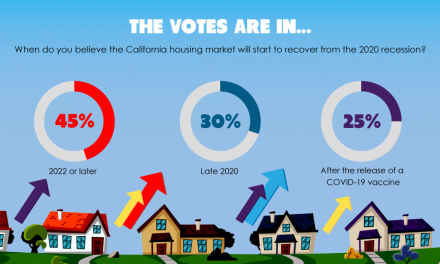While the National Bureau of Economic Research has yet to formally declare a recession, California renters can assure you it’s already here.
That’s because renters in the state are being strangled financially by twin crises: soaring inflation and rental prices. Both factors threaten to slow real estate turnover and evaporate agent income in the process.
Inflation vs. homebuyers
Inflation has quickly emerged as the dominant factor shaping renter behavior in 2022.
As the Federal Reserve (the Fed) battles inflation with rate hikes, the average 30-year fixed rate mortgage has rocketed to 7.08% — with little to no signs of slowing down. This means potential homebuyers of single family residential (SFR) properties are instead remaining renters for longer.
These are the same potential buyers balking at monthly mortgage payments with today’s rates, resulting in sinking home sales volume. August 2022’s sales volume was a devastating 29% below a year ago in California, peaking unseasonably early.
Despite home prices receding to mitigate the pain of rising rates, the discount has yet to coax renters out of the wait-and-see phase. Cautious clients will be waiting years — until around 2025 — to see the bottom of this market cycle.
In the meantime, many Californians are turning to a tight rental market to meet their housing needs.
No vacancy
Homeowners forced into the rental market have made a big splash in a small pool.
With already limited rental vacancies, California’s depleted rental inventory is struggling to meet demand. In fact, the state’s average rental vacancy rate declined to 3.8% in Q1 2022, below the historic average of roughly 5.5%. These dangerously low vacancy rates signal a dire need for more residential construction.
Multi-family construction starts experienced a 6% increase in the six-month period ending July 2022 for an additional 1,500 multi-family units as builders try to meet demand. This promising momentum, though, has hit a speed bump.
Despite the overall increase of construction starts this year, multi-family construction permits declined nearly 18% in August 2022, the lowest since June 2020, according to MPA.
In order to meet increasing rental housing demands, construction starts need to pick up first. Until then, the rental market’s housing scarcity will continue as competition balloons into too little inventory for too many potential renters.
Related article:
California’s distinctly low vacancy rates signal the need for more construction
Rentals: The Last Hope
Thanks to limited supply, rental prices are finding opportunity to spiral in tandem with inflation.
As of September 2022, California metros are home to some of the highest median rents in the nation, including:
- San Francisco at $3,807 per month;
- San Jose at $3,611 per month;
- Los Angeles at $3,469 per month;
- San Diego at $3,441 per month;
- Sacramento at $2,774 per month; and
- Riverside at $2,724 per month, according to Redfin.
With these inflating rental prices, wallets are much lighter. Tenants are becoming increasingly cost burdened — spending more than 30% of their monthly income on rent — dimming their homebuying aspirations.
But even in the face of soaring inflation and rental prices, real estate licensees can still restore a spark of hope to the fight.
Speak to the property manager
As potential homebuyers have shifted to rentals, real estate licensees will also need to shift. By diversifying their skills, agents and brokers can set themselves up to survive the lean times ahead.
Since the rental market is experiencing outsized demand, it remains a safe and stable source of income for property managers. This profession enjoys the rare benefit of being recession-proof, and requires many of the same skills real estate licensees already exercise.
For instance, property manager responsibilities typically include:
- filling vacancies with suitable tenants;
- collecting rent;
- incurring and paying expenses; and
- accounting to the landlord. [See RPI e-book Real Estate Property Management, Chapter 9]
Property management provides a steady flow of income to supplement dwindling home sales transactions. Licensees already possess many of the critical skills and knowledge needed for a successful transition through the pandemic economy, allowing them to further build their experience as well-versed industry professionals.
When California’s SFR market bottoms around 2025, renters will return to the housing market en masse. At this point, licensees will be in a prime position to farm their client base — giving your property management skills utility beyond the recession.
Maintaining your industry experience by pivoting to property management means your skills and licensure are ready for the upswing. Subscribe to Quilix, the weekly firsttuesday newsletter, to follow this industry shift.














